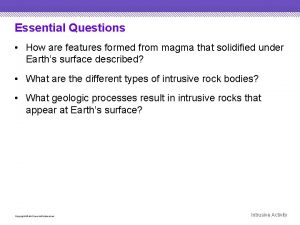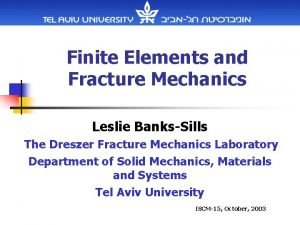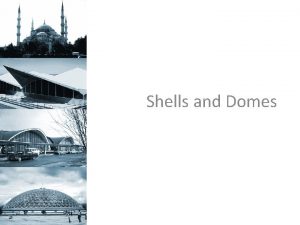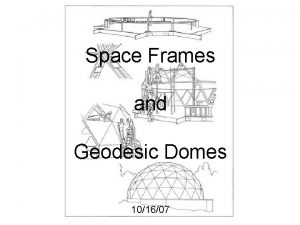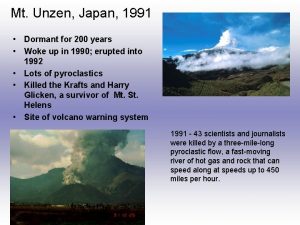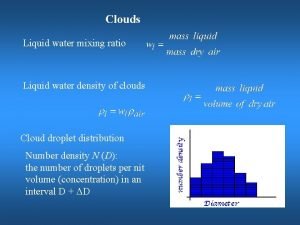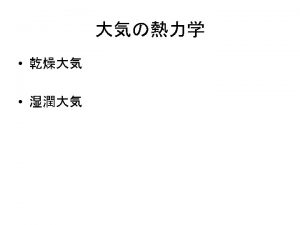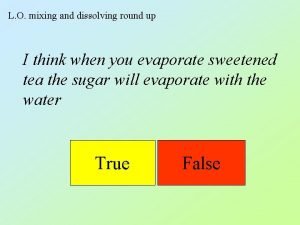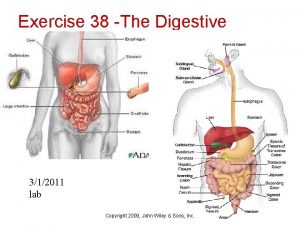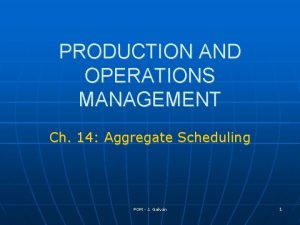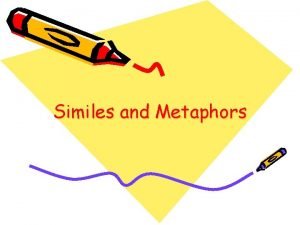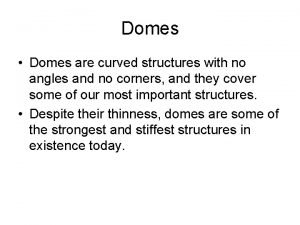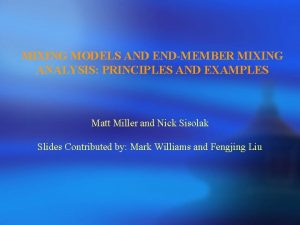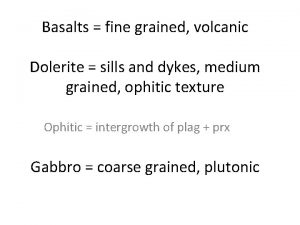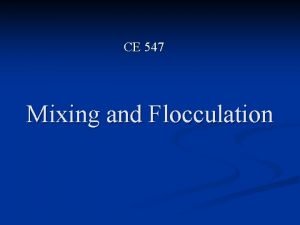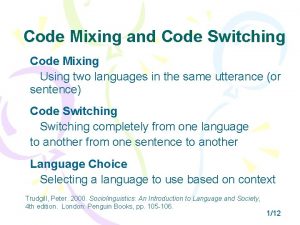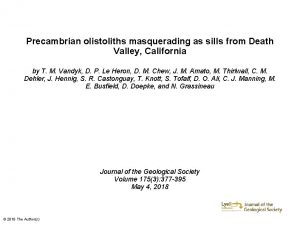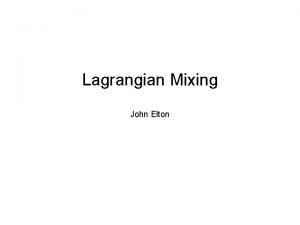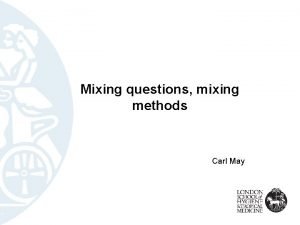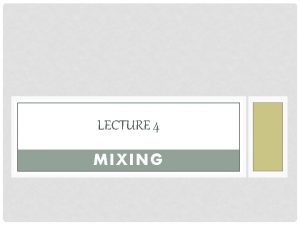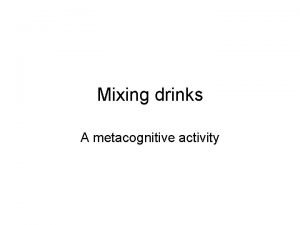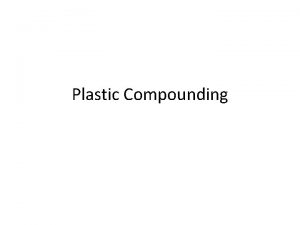Mixing in Cold water Domes and at Sills

























- Slides: 25

Mixing in Cold water Domes and at Sills Alan M. Davies and Jiuxing Xing Proudman Oceanographic Laboratory, Liverpool, UK

Dome Problem • Wind forced internal waves in cold water bottom dome. • Mixing within thermocline. Internal mixing. • Role of Vorticity at dome front in producing internal wave • Role of wind forcing frequency. Super and Sub- inertial features

Non-Linear effects on Inertial Oscillations • Unbounded Ocean Eqts • Effect of external shear is to change Amp. + Freq. of I. O. • Frontal Shear Changes I. O. amp. /Freq at depth so conv/divg. Gives internal wave at level of thermocline. • Freq. int. wave above inertial propogates away , if below trapped



Super-inertial wind forcing

• Wavelength λf from Dispersion Relation • ωf = forcing frequency • So λf/Leff gives nodal structure where Leff is “effective length” of dome


Sub-inertial wind forcing


CONCLUSIONS • 1. Non-linear effects associated with along frontal flows produce near-inertial internal waves in presence of wind forcing • 2. Super-inertial internal waves propagate away from generation region (front) • 3. Sub-inertial are trapped and enhance mixing in frontal region • 4. In a cold water bottom dome, super-inertial internal waves are trapped as standing waves, can modify GM spectrum • 5. Response in centre of dome different from 1 D model, must account for internal wave • 6. Sub-inertial wave confined to front, and response in centre of dome as in 1 D model

TIDAL MIXING AT SILLS • • • Idealized Loch Etive Recent measurements Inall et al Non-hydrostatic model High resolution Idealized M 2 forcing + idealized T profile Example of internal mixing of tidal origin

Initial Conditions







Influence of small scale topog. • Lee wave characteristics influenced by • Buoyancy frequency • Velocity over sill…. . Froude Number • Fourier transform of topog. • So How small scale effect mixing ? ? ?



CONCLUSIONS…. . Sill • • Internal tide little mixing Lee Wave not advected back over sill Lee Wave major source of mixing Lee wave distribution influenced by nonhydro. nature of model • Lee wave spectrum/mixing influenced by small scale topog. + Horizontal Visc. • Assumptions in b. b. l. also infulence lee wave hence mixing

Future • Role surface stratification / fresh water , wind mixing • Detailed distribution of Topog. • Sill b. b. l effects • Lateral + across sill form drag • Horizontal + Vertical tke schemes (LES) • Role non-linearity (u du/dx ) Internal tides vz. Lee waves control on mixing

Model Skill Assessment • Model Validation in highly variable undersampled domain. • Spectral Decompostion. . Hans van Haren • Detailed measurement critical small scale topog. and stratification. • Tidal corrected dissipation rates and mixing + filtered lee wave advection effects • Role of lab. Expts + upscale.
 Water and water and water water
Water and water and water water How does a sill form
How does a sill form Leslie banks-sills
Leslie banks-sills Shells and domes
Shells and domes How to draw onion domes russian architecture
How to draw onion domes russian architecture Geodesic space frame
Geodesic space frame Gravity luxury domes
Gravity luxury domes What type of volcano is mt unzen
What type of volcano is mt unzen Warm water rises in a lake. cold water descends.
Warm water rises in a lake. cold water descends. Water mixing ratio
Water mixing ratio Water vapor mixing ratio
Water vapor mixing ratio The cold war lesson 1
The cold war lesson 1 Direct system of hot water supply
Direct system of hot water supply Magnesium with hot water
Magnesium with hot water In the mixing of thymol and menthol
In the mixing of thymol and menthol Cutting terms
Cutting terms Mixing red and green marbles physical or chemical change
Mixing red and green marbles physical or chemical change Mixing and dissolving
Mixing and dissolving Copyright
Copyright Soluble salts can be made by mixing acids and alkalis
Soluble salts can be made by mixing acids and alkalis Tools for mixing blending straining and rolling
Tools for mixing blending straining and rolling Musical messages written around the brand
Musical messages written around the brand Linguistic repertoire definition
Linguistic repertoire definition Counterseasonal product and service mixing
Counterseasonal product and service mixing What happens during stage 2 of cold water immersion
What happens during stage 2 of cold water immersion Spring poems with similes and metaphors
Spring poems with similes and metaphors

